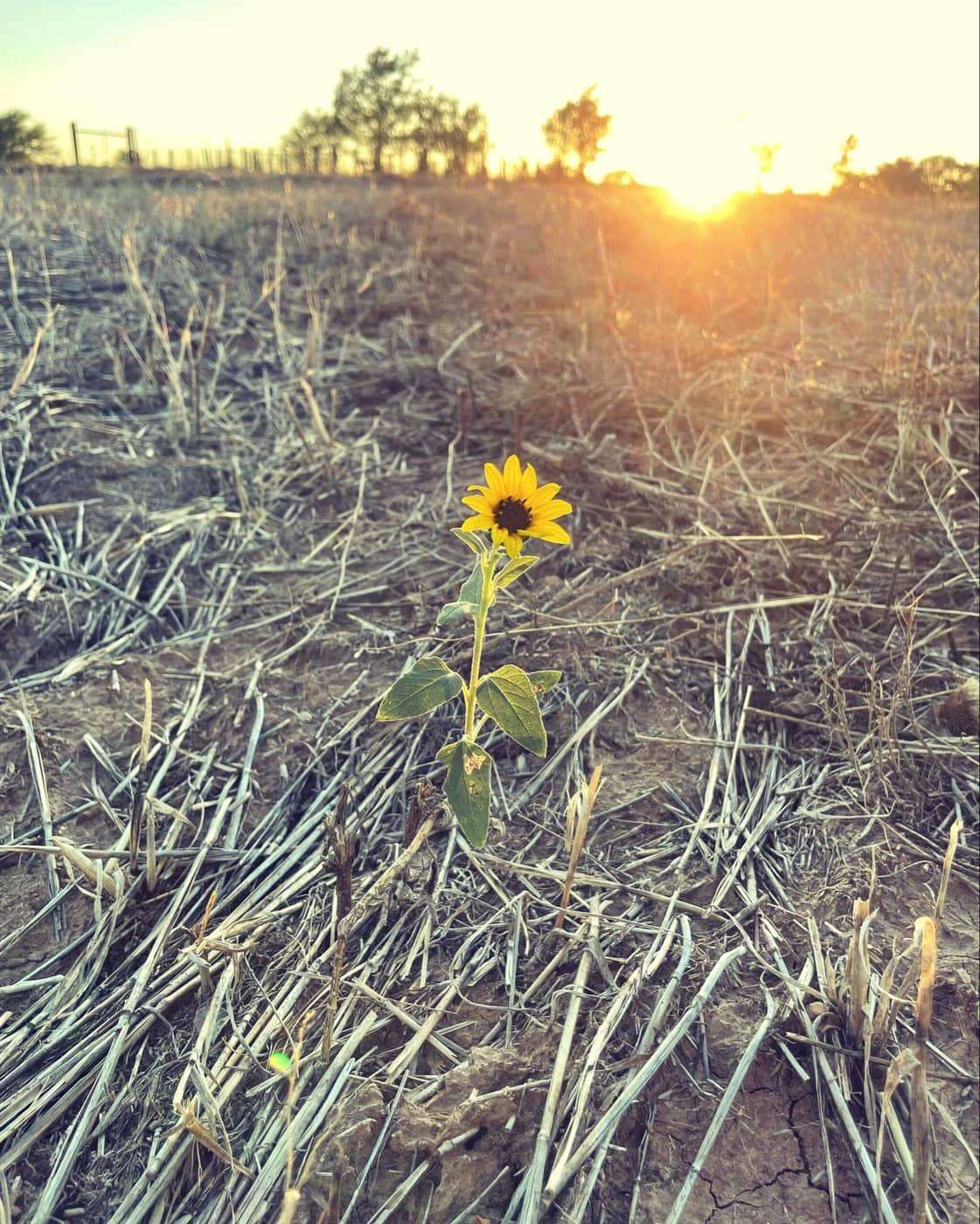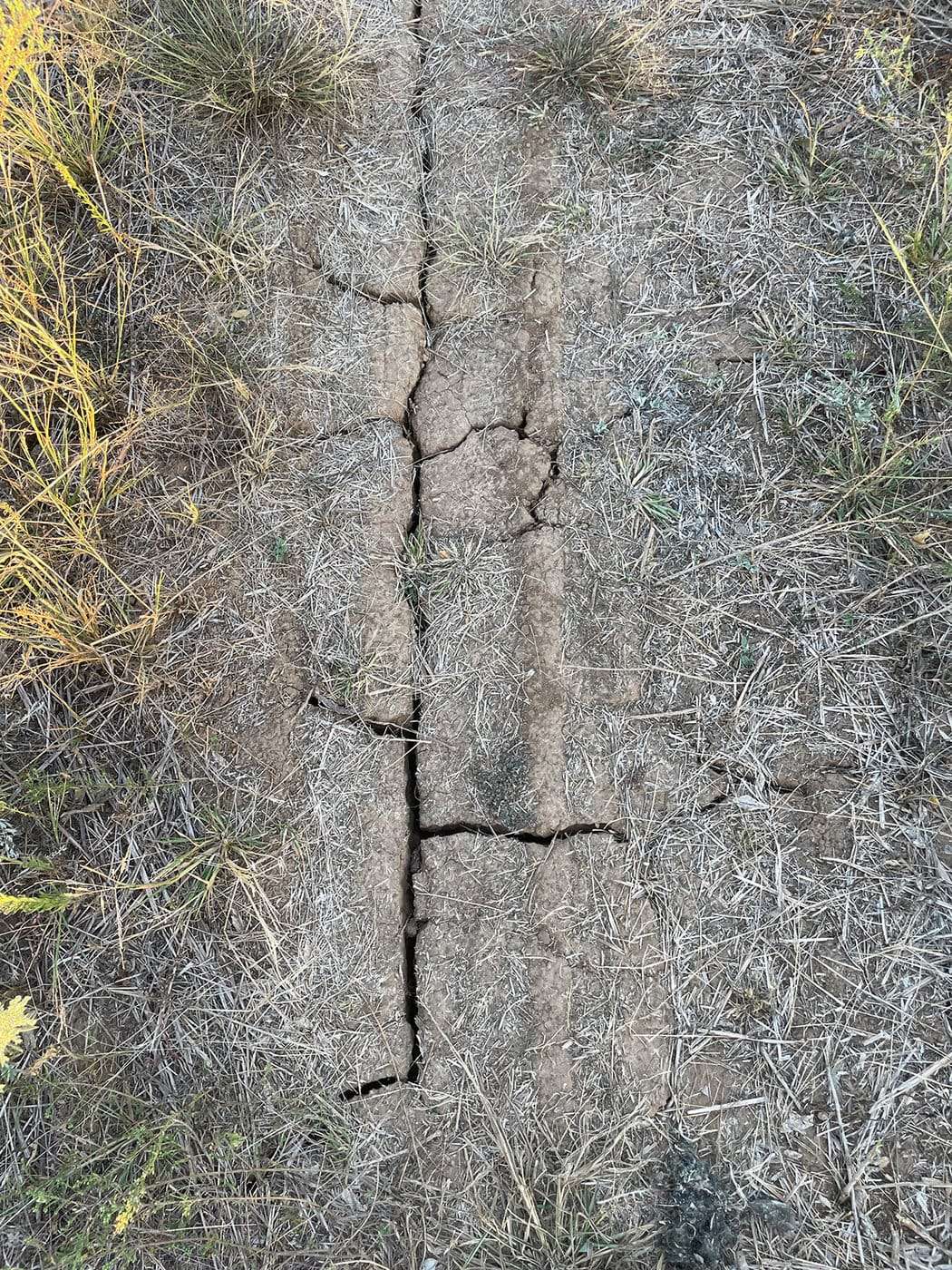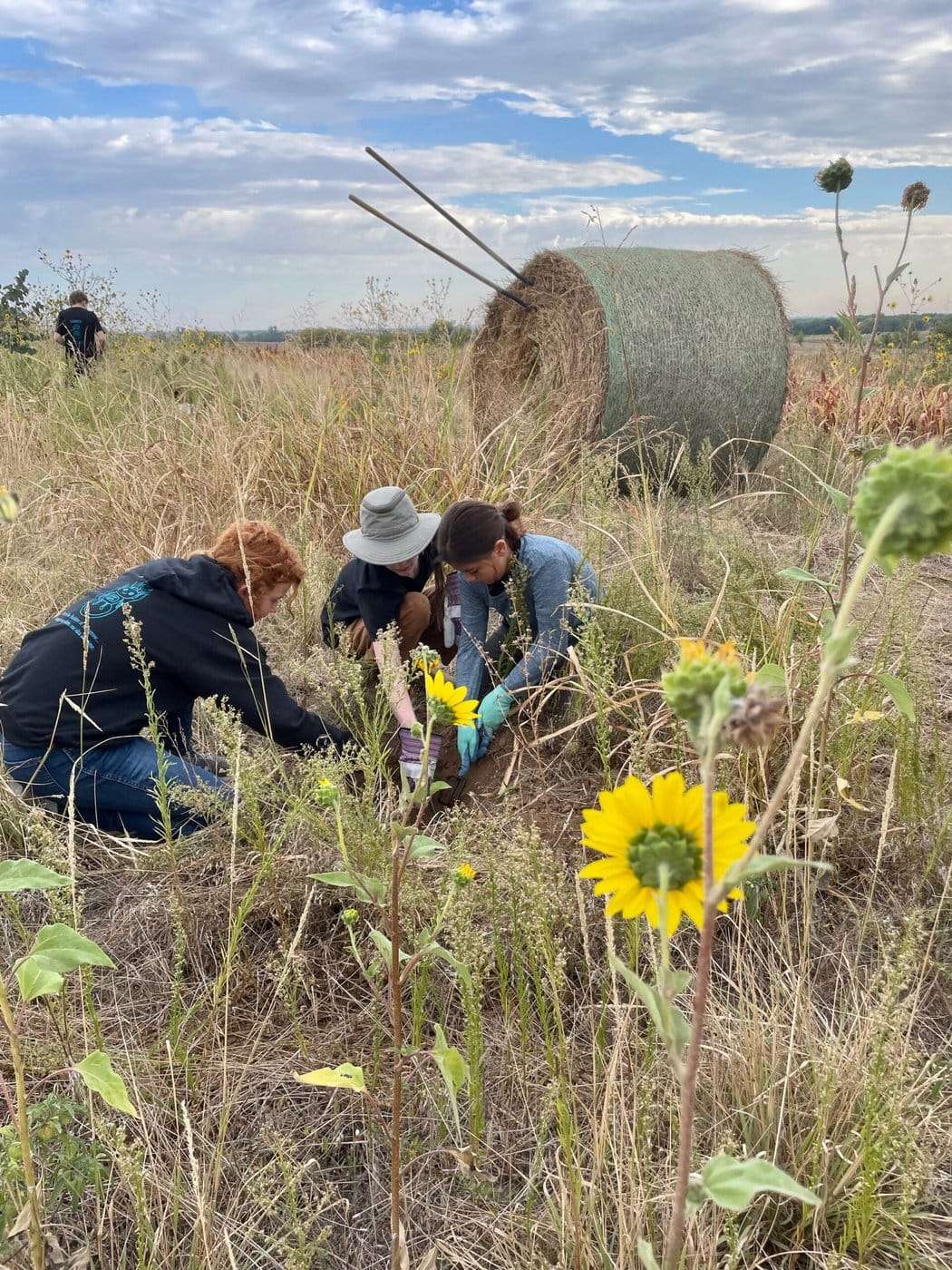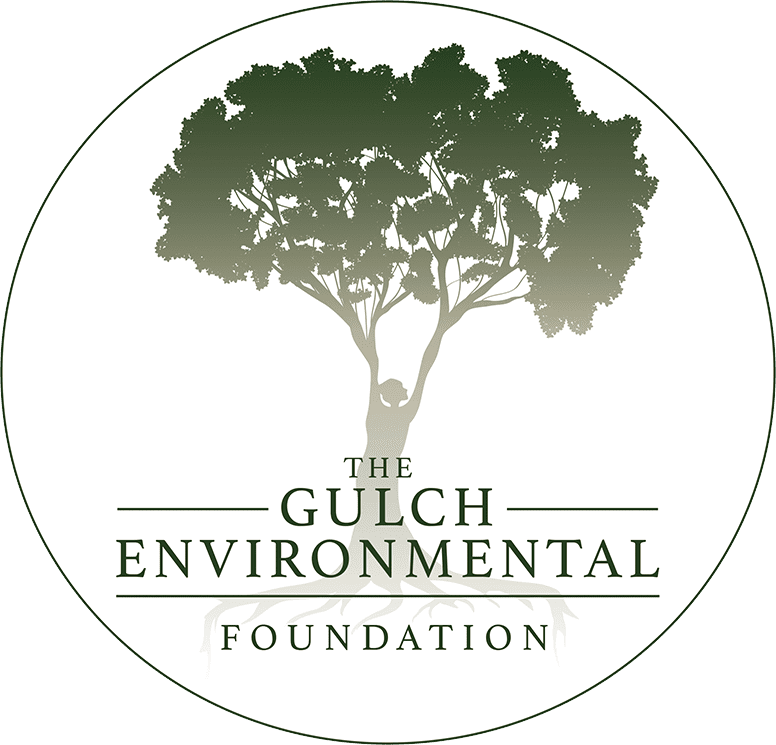2022 Q3 Impact Report
Letter from Founder and Team
It has been a year of action and education for the Gulch Foundation, with most of our activity focused on our flagship project Rainmaker Farm. At Rainmaker Farm, we are transitioning to regenerative agriculture, sequestering carbon, and conducting outreach and education. We harvested our first wheat crop. We also welcomed our second type of livestock (cattle) into the native grassland area. The first calf was born on Rainmaker, affectionally named “Slider.”
Like all farmers, we are heavily influenced by the whims of the weather. Looking back at the 128 years of climate data, this year has been the 58th driest on record for Noble County. Much of the region is in severe drought, with many areas not getting appreciable rain for over 50 days. Crops are severely reduced, and pasture growth is stunted. However, as we grow a variety of crops – we were still able to harvest our wheat.
The 150 orchard trees and all the newly planted border trees had to be watered by hand, and we sustained losses to those due to the difficult conditions during the first year of establishment. However, we remain optimistic about a good fruit harvest in Q3 of 2023. Under current climate scenarios, summers in Oklahoma will become increasingly hot and dry. With droughts like this predicted to become more frequent by 2050, it was a perfect year for us to learn how to farm sustainably, effectively, and profitably under these conditions.


We continued our outreach and education efforts, hosting a competitive robotics team from California at Rainmaker farm. The students helped plant hedgerow trees, learned about energy flow on earth, and how farms and fuel are related to the power they use to power their robots!
Students from a local high school robotics club joined us for a meet-and-greet and a hands-on robotics demonstration – building bridges between the two communities.
Looking forward, we will continue to care for our perennial crops, seed for the cool season, develop the farm infrastructure, and continue our outreach, education, and public involvement.
Our projects are working to do good on multiple fronts: carbon sequestration, regenerating soil, making food for those in need, planting diverse crops for stability in changing times, and providing habitat to support our farm as part of the larger matrix of natural systems in the region.
We could not do our work without donors. Our foundation’s administrative costs are covered through sponsorship donations, and all other donations go directly to on the ground project actions.

Summary of Q3 Activities
Our donor-funded activities are broken down into 7 main categories. The activities completed during this quarter are outlined below:

1. University Involvement Support
- Baseline soil sampling and analysis for Rainmaker Farm is complete, and final reporting was received in Q3 and is available on our website.

2. Diverse Planting
- Perennial: We continued to care for the newly planted orchard trees. We spread an entire round bale of straw around the base of these trees as mulch to help them retain moisture as they became established during drought conditions. Additional protective deer fencing was also added around many of the young trees. This fencing also kept the mulch in place.
- Annual:
-
- Wheat: Our first crop of no-till winter wheat was harvested. Although some weeds were mixed in while growing, the grain elevator can separate them easily.
- Milpa: Due to the drought, the Milpa crop was stunted and not harvestable. However, many of those species were also soil builders so that they will contribute to the regeneration of Rainmaker’s soils.

3. Livestock Incorporation
- Cattle: Rainmaker farm introduced 20 cattle (12 cows, 1 bull, and 7 calves), which will be used to control thatch in the established grassland area. The estimated Residual Dry Matter (RDM; the older dried out plants from past growing seasons) at the start of the grazing was 4000lbs/acre, and these cattle will stay on Rainmaker until the RDM is reduced to 1000lbs/acre. This is using a similar strategy to mob grazing, with short-duration high intensity grazing until the cattle are moved to another pasture. In this case, as we have a comparatively small area that is used for grazing, this is accomplished through collaboration with neighboring farms.
- European Honeybees: Our four honeybee colonies have been thriving. Additionally, we added new queens to improve the stock.


4. Cover Cropping
- Cover cropping is beneficial to regenerative farming in many ways. It protects the soil from erosion. Many species replenish essential nutrients, such as nitrogen, in the soil. The deep roots from native species also help sequester carbon. In Q3 of 2022, our soil building cover crops was going to seed. It was swathed into rows for later burning as part of invasive weed control. The 54 acres of native grass are perennial species and continue to develop, along with the 25 acres of pollinator habitat.


5. Farm Equipment & Supplies
- A few additional supplies were purchased for the third Farm Day activities, for the K-12 students to learn about farming, and assist with planting.

6. Infrastructure
- We have started the process of installing a solar well. In Q3 we met with a well driller onsite and chose a location. A solar well will be crucial for dry years like this one when the creek does not flow above the surface.
- The fencing around the grassland area was repaired so it can securely hold cattle.
- We now have a large compost bin, which will allow us to compost any food waste onsite to use as soil amendment.
- We built a small barn near the tiny house. This allows us to securely store equipment and supplies onsite, while providing a shady gathering spot for visitors. The barn was already used for the visiting robotics club.
- An additional 12 trees were planted along the border of Rainmaker Farm by the visiting school group.

7. Rainmaker Farm
- There is ongoing monitoring of the barn owl nest boxes Rainmaker Farm is using ecological pest management. Markings on the exterior of the boxes showed some visitors to the boxes. We added wood mulch to encourage nesting.
Targets and Goal Tracking
We are on track to meet our targets and goals.
Next Steps
In Q4, we anticipate:
- Planting cool season crops, including winter wheat and alfalfa.
- Continue to care for the orchard and border trees.
- Starting to prepare the infrastructure for poultry, which will provide natural pest control, fertilizer, and eggs.
- Developing additional water sources (water catchment, solar wells, etc.).
- Continuing our outreach and education efforts.
